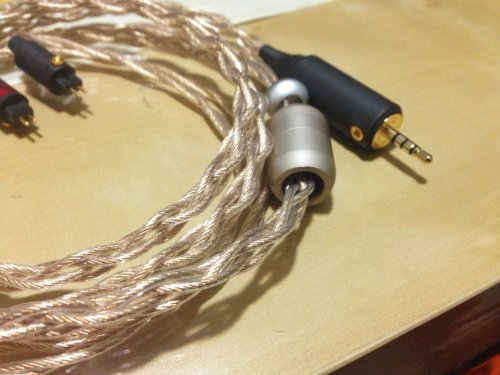Disclaimer: This product was sent to me by Plussound Audio for the purposes of a review. I am otherwise in no way affiliated to the company.
Cables have always been something of a controversial topic in the hobby. There are some that swear by them, claiming that cables can make or break a system, and there are others adamant that cables make zero difference. Most people seem to be happy to settle on the middle ground and would declare cables to make an audible, but not hugely significant difference to the sound.
In my experience, I personally find it to range anywhere between the latter two. More often than not, cables make a small difference to the sound, and often not necessarily an improvement. Yet sometimes, a cable comes along that really changes things, and the Plussound GPH is one such cable.
I’ve always had a thing for plussound cables, especially since their first generation of litz cables. I thought they were well built, reasonably priced and great sounding cables. With the latest range of gold plated plussound cables, however, they’ve firmly planted themselves in the high end IEM cable market, and I’m glad to say that they truly have a sound befitting of the large price tag.
Buily quality
The GPH is an extremely well built, lovely looking cable. The wire itself is soft and supple, and no matter how tightly it is coiled, it always settles nicely without any signs of memory. I’m not someone who’s too bothered by wire memory, but it sure is nice to have a tangle free, memory free wire.
It looks marvellous as well. It looks, well, gold. And a closer inspection would reveal little bundles of wire due to its litz configuration. You would also notice that despite it looking just gold from a distance, the bundles are actually 2 slightly different shades of gold because of the underlying conductor material.
The plugs and pins used are of a high quality as well, giving a very sturdy connection to whatever source or IEMs you plug them into. They have a plussound branded heat shrink over the Connectors and the plug, and this really gives it a great, polished look. The GPH is without a doubt one of the most stunning cables I’ve had the pleasure of holding.
 Sound
Sound
The GPH is a rich, musical and lush sounding cable. If you’re looking for a cable that adds zero colouration to the sound, a cable that simply improves on the technicalities of the sound, then I’m afraid the GPH isn’t for you, and you should be looking elsewhere.
The bass of the GPH is big, powerful, and has a slight bloom to it, giving it a huge presence on the low end. Despite that slight bloom which I do often find in Gold containing cables, the GPH retains good control in the lower frequencies. Any IEM which I plug the GPH into automatically develops a much more powerful, much larger bass presence. This bass presence and depth really adds another dimension to the sound, creating a sort of a foundation upon which the rest of the sound is built upon. It fills the stage really well, and really adds to the scale of the music.
The midrange of the GPH is similarly lush and forward, creating a slightly more intimate presentation on vocal tracks. It really brings the singer up close and personal, and gives this smooth, rich, and deep character to the sound. There’s this slight emphasis on the lower midrange, and this really adds to a musical, intimate experience. It’s not just vocals that benefit from this, across the board, instruments fill out and gain more body and presence, the music just has that much more soul to it with the GPH.
The highs of the GPH aren’t the most sparkly or airy, instead, they are smooth, with a slightly softer, gentler presentation. That said, it is well extended, and anything that is in the higher registers will be conveyed to you, just in a slightly less exciting and elevated manner. To me, this isn’t the highlight of the GPH’s sound. If you are, however, looking for something smooth, a little more relaxing in the long run, this would be a serious contender.
Now, sound is a rather special thing. Very often, we have to make compromises. If you want an airy, spacious sound, you often have to give up some lushness. A smooth, musical sound very often gives up that airy, open stage we so often crave for. It’s also not commonly associated with a highly detailed, transparent, and resolving sound.
That’s where the GPH starts to throw us off. The GPH, while being incredibly rich, smooth, and lush, portrays an incredible amount of microdetail. Transparency is top notch, and the sense of space and separation is astounding. It layers remarkably well, and despite a forward presentation, the actual space extends really far out, thus throwing out a huge, spacious stage. Details don’t exactly jump out at you due to its signature, but if you begin to look for it, you will find that it is all there.
The Plussound GPH definitely isn’t for everyone. It isn’t by any means a neutral reference tuned cable. It’s a lush, musical cable, unapologetically so. What it gives you is this warm, lush and emotive, intimate yet incredibly spacious musical experience that doesn’t compromise on technicalities. If that’s what you’re looking for, then the GPH should be a serious consideration.
It’s never easy to combine the two, to have that lush smooth signature without losing the edge to the sound, and I think Plussound has just showed us how it should be done.



